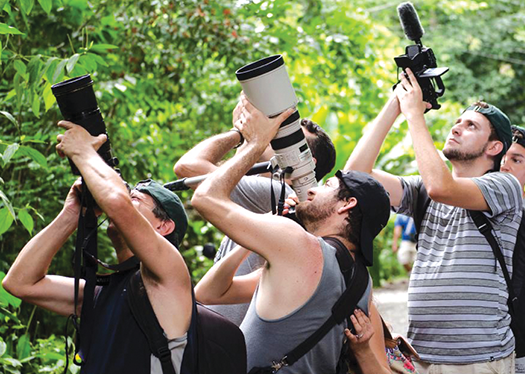
Manuel Antonio National Park’s beauty and species-rich habitat create a powerful draw. (Photos by Costa Rican Tourism Institute)
Costa Rica’s government has been forced to reduce the number of visitors to its most popular national park following a high court ruling that the presence of too many tourists was disrupting the park’s ecosystem.
Finding in favor of a complaint filed by an environmental advocate, the country’s Constitutional Court ordered in May that the government of conservative President Rodrigo Chaves must allow no more than 1,120 people per day to enter Manuel Antonio National Park. The park, which is closed on Tuesdays, is the most visited of Costa Rica’s 28 national parks and is home to white-face and howler monkeys, caimans, sloths, and hundreds of bird species.
The ruling reverses a policy implemented in February to permit up to 3,000 visitors a day in the popular park in order to speed the recovery of Costa Rica’s tourism industry—even though in 2018 a limit of 1,120 visitors per day was set by a previous administration. Environmental advocates challenged the increase, saying tourists roaming the park in greater numbers were trampling and disrupting the reproductive cycles of plants, disturbing wildlife habitat, and accelerating changes in animal behavioral activities such as hunting and feeding.
Unusual vulnerability cited
Christian Mata, president of the Costa Rica Foundation for Ecological Restoration, a national environmental group, filed a complaint in March with the country’s constitutional court, which ruled in his favor. Mata asserts the park is unusually vulnerable because its plant and animal life are largely cut off from other natural areas, given the presence nearby of African palm plantations and rice-growing operations. That fragility, combined with aggressive tourism promotion, has taken a toll, he says. “Manuel Antonio National Park has become an economic product and, unfortunately, the idea of conservation has been eroded,” Mata told EcoAméricas this month. “We went to court to ensure the park doesn’t die off in 10 years.”
Mata argued in his complaint that the increase in visitors threatened biodiversity, lacked scientific basis, and was not rooted in technical analysis. In its 5-2 decision, the court agreed that the surge in visitors “violates the principles of reasonability, proportionality and scientific criteria.”
The government complied with the ruling, but has not abandoned the idea of increasing visitation to the park. Chaves has vowed that the government will seek to fix trails, improve the park’s infrastructure and conduct scientific studies with the aim of allowing more tourism.
“Don’t believe everything you hear,” Chaves said in a press conference following the ruling. “There will be people who say that we want to destroy Mother Nature and the environment in Manuel Antonio, but there is no contradiction. There are small investments that we can make to ensure the park doesn’t suffer, while also making sure the stomachs and wallets of the honest people working in tourism don’t suffer either.”
But Laura Porras, a researcher for the International Institute of Wildlife Conservation and Management at the National University of Costa Rica, says such an approach will not ensure the park’s protection. “It is shortsighted to think that, by fixing bathrooms and trails and adding more park guards, they can let more people in,” Porras says. “They’re only looking at the administrative side of things and aren’t considering the impact on flora and fauna that live inside the park. The problem for the ecosystem is the number of visitors.”
Popularity’s downsides
The institute has been conducting research in Manuel Antonio for decades and had already noticed changes to animal behavior as the park gained popularity in recent years. Porras says the increase in visitors in February exacerbated negative interactions between people and animals. Tourists looking to take selfies with wildlife use food to lure animals close. They often post pictures of themselves with sloths inside Manuel Antonio Park.
Many species of animals are being conditioned to snatch food from humans instead of hunting for it, Porras says. Normally nocturnal raccoons are becoming increasingly diurnal in order to interact with park visitors, for instance.
Environment Minister Franz Tattenbach says the government has signed an agreement with the tourism board to fix one of the trails, known as the La Catedral trail, which has been closed due to a lack of maintenance. Opening it will take pressure off other areas where people have congregated in large numbers to feed animals, he said. He also says they are working on a deal with the open-air restaurant inside the park to build an enclosure around it so animals don’t enter while people are eating.
“There will be a cage around the restaurant where people will be inside the cage and the animals outside it,” Tattenbach explains. “That will give us better control.”
But environmentalists counter that such plans do not address the long-term health of the park. Argues Porras: “We are thinking backwards. We are thinking about how to make more money with a national park instead of about how to make it sustainable over time.”
- Michael McDonald